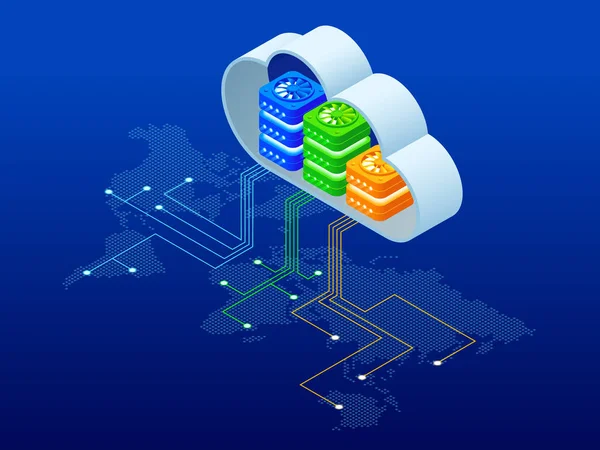Seamless Transition: Mastering Office 365 To Office 365 Migration
In the dynamic realm of modern business, the evolution of digital tools is a constant. For enterprises relying on Microsoft's Office 365, the transition to a newer version is a pivotal undertaking. This article explores the intricacies of achieving a seamless transition – a mastery of Office 365 to Office 365 migration. Delving into key considerations, challenges, and strategies, we aim to provide insights that empower organizations to navigate this transformative process with efficiency and precision. From understanding the motives behind migration to addressing potential hurdles and implementing effective strategies, join us on a journey to ensure a smooth and successful transition in the ever-advancing landscape of office productivity. For further details, visit this webpage.
Understanding the Need for Migration
Before embarking on the migration journey, it's crucial to comprehend why organizations opt for transitioning from one version of Office 365 to another. Microsoft regularly updates its software to introduce new features, enhance security, and improve overall performance. Migrating to the latest iteration ensures that businesses can leverage these advancements to stay competitive in a fast-paced digital environment.
Key Reasons for Migration
- Feature Enhancement: Migrating from Office 365 to a newer version ensures access to the latest features, fostering innovation and efficiency.
- Security Upgrades: Newer Office 365 versions often include enhanced security measures, providing better protection against evolving cybersecurity threats.
- Performance Improvements: Upgrading guarantees optimized performance, offering improved speed and responsiveness.
- Compatibility: Staying current with Office 365 versions ensures compatibility with the latest hardware and software technologies.
- User Experience: Transitioning allows organizations to provide a seamless and modern user experience, enhancing overall satisfaction and productivity.

Challenges in Office 365 to Office 365 Migration
While the benefits of migration are evident, the process is not without its challenges. Overlooking these challenges can lead to disruptions, data loss, and increased downtime.
Data Migration Complexity
One of the primary challenges is the complexity of migrating data seamlessly. Organizations often have vast amounts of emails, documents, and other critical data stored in their Office 365 environment. Ensuring that this data is transferred accurately and efficiently requires meticulous planning and execution.
Integration with Third-Party Apps
Many organizations rely on third-party applications integrated with Office 365 for various functionalities. Ensuring that these integrations seamlessly transition to the new version is a challenge that requires careful consideration and testing.
User Training and Adoption
Transitioning to a new version of Office 365 introduces changes in the user interface and features. Adequate training and communication are essential to ensure that users adapt quickly to the new environment, minimizing productivity losses.
Strategies for a Seamless Office 365 to Office 365 Migration
Overcoming the challenges associated with migration requires a well-defined strategy. Implementing the following strategies can help organizations ensure a smooth transition without compromising data integrity or productivity.

Thorough Planning
A successful migration starts with comprehensive planning. Identify the specific requirements of the organization, set clear objectives, and establish a timeline for the migration process. Engage key stakeholders to gather insights and ensure alignment with business goals.
Data Pre-Migration Assessment
Before initiating the migration, conduct a thorough assessment of existing data. Identify redundant or obsolete information and develop a strategy for data cleanup. This not only streamlines the migration process but also ensures that only relevant data is transferred to the new environment.
Pilot Testing
Implementing a pilot migration with a small group of users allows organizations to identify potential issues and fine-tune the migration process before a full-scale rollout. This phased approach minimizes the impact on the entire workforce and provides an opportunity to address any unforeseen challenges.
User Training and Communication
To facilitate a smooth transition, invest in user training programs and communication strategies. Provide users with in-depth training on the new features and functionalities of the updated Office 365 version. Transparent communication about the migration timeline and potential disruptions helps manage user expectations.
Ensuring Data Security and Compliance
- Encryption: Implement robust encryption protocols to safeguard sensitive data during the migration, preventing unauthorized access.
- Access Controls: Set up stringent access controls, restricting user permissions based on roles to prevent data leaks and unauthorized modifications.
- Compliance Audits: Conduct thorough compliance audits before and after migration to ensure adherence to regulatory standards and data protection measures.
- Data Protection Measures: Enforce comprehensive data protection measures to mitigate the risk of breaches and maintain the integrity of sensitive information.
- Regulatory Alignment: Verify that the migration process aligns with industry-specific compliance standards, ensuring legal and regulatory requirements are consistently met.
- Continuous Monitoring: Establish ongoing monitoring mechanisms to track data security post-migration, promptly addressing any emerging threats or vulnerabilities.
Post-Migration Evaluation and Optimization
Once the migration is complete, the journey doesn't end. Continuous evaluation and optimization are necessary to ensure that the new Office 365 environment meets the organization's evolving needs.
Performance Monitoring
Performance monitoring is crucial post-migration to ensure optimal functionality. Regular assessments of server performance, network latency, and user feedback help identify and address issues promptly. By actively monitoring the new Office 365 environment, organizations can maintain peak performance, swiftly respond to challenges, and enhance overall user satisfaction.
Feedback Mechanisms
Solicit feedback from users regarding their experience with the new Office 365 version. This valuable input can uncover potential pain points or areas that may require further improvement. Establish mechanisms for ongoing communication to address user concerns and enhance overall satisfaction.

